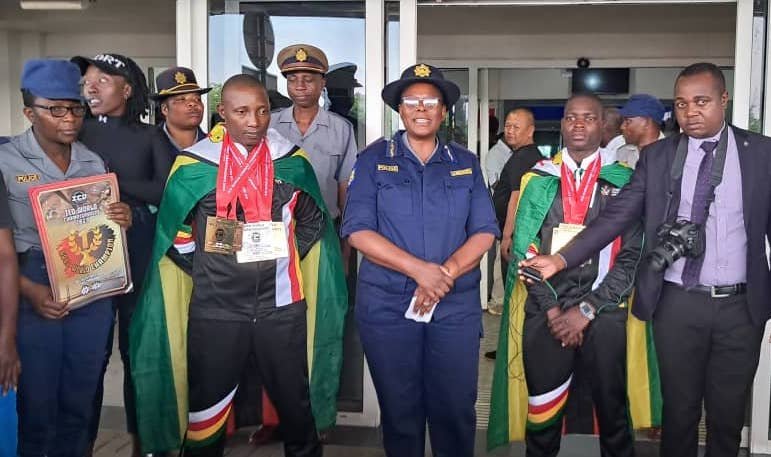News
The Humanitarian Resolve, Inside the Heart of EatOut Movement’s Battle Against Homelessness
Charity handouts are a temporary fix. EatOut Movement believes in disrupting the “business as usual” approach to homelessness

In a world marked by staggering numbers, it’s easy to overlook the human faces behind the statistics. We often hear that approximately two percent of the world’s population is homeless, a seemingly small figure. But when we delve into the reality, it equates to a staggering 154 million people living on the streets, in temporary shelters, refugee camps, and other transient, often perilous conditions. Homelessness is a global crisis, but its true extent often remains hidden from view.
While rough sleeping is the most visible aspect of homelessness, it’s only the tip of the iceberg. The majority of those without a place to call home experience what’s known as “hidden homelessness.” They live out of sight, residing in hostels, squats, B&Bs, and various forms of temporary accommodation. Some sofa surf, relying on friends or family for a place to stay. Despite having a roof over their heads, these individuals are classified as homeless because they lack access to safe, secure, and stable housing of their own.
Home is more than four walls, it is more than just a roof over your head; it’s a sanctuary of safety, tranquillity, and comfort, a place to call your own. Living in a B&B, sleeping on someone’s floor, or staying in a hostel denies people their privacy and the chance to feel secure. This is the core issue that the EatOut Movement, a charitable organization in Zimbabwe, is dedicated to confronting head-on.
Speaking to the faces behind EatOut Movement, there is no denying that challenges are astronomical, and they require the intervention of all players in society big or small, from the government to business and the civic society, it is a fight that requires massive mobilisation of resources.
Elevation caught up with Mr Henry Chigama, Founder and CEO of EatOut Movement at his offices in Belgravia, Harare, his eyes gleam with unwavering determination as he articulates the dire straits of the streets, where the swell of displaced youth, women, and children is becoming an increasingly distressing sight. “Our streets are becoming a sorry site,” he laments, highlighting the staggering daily increase in those without a place to call home. “The lack of resources is an apparent obstacle,” he confides, underscoring the profound challenges they face. Undeterred, he emphasizes the importance of meticulously assessing the needs of homeless individuals, ensuring their aid aligns with their most urgent necessities.
Conversing with Mrs. Patience Chigwida, the programme Director of EatOut Movement, one is immediately struck by her unwavering dedication to safeguarding the dignity of the vulnerable, particularly the girl child. Amidst the bustling backdrop of the homeless community, her maternal embrace extends to countless young girls who find solace and support in her compassionate presence. A radiant smile adorns her face as she emphasizes the critical role of donors in providing crucial support, especially for women in dire need of basic necessities such as sanitary wear. Her warmth is palpable as she intertwines her fingers with those of a young mother, epitomising the spirit of solidarity and empathy that defines the essence of the EatOut Movement.
Who is EatOut Movement?

The EatOut Movement is a Trust, registered as EatOut Movement Trust MA1987/2020, and was founded in 2017 with a singular vision: ending homelessness in Zimbabwe. The journey began in Harare, and the movement has since expanded its efforts to Bulawayo. Their approach is as simple as it is powerful: reduce homelessness one life at a time.
One of the pivotal moments in the EatOut Movement’s history was the CEO EatOut initiative, which debuted in 2018. It involved setting up and operating a pop-up fine dining restaurant where CEOs and top-level management from local companies served the homeless a meal. But it didn’t stop there; before the meal, the homeless community in Harare received a haircut, a shower, clean clothes, counselling, legal aid services, and a general health check.
Following the resounding success of the inaugural EatOut event, the movement has experienced exponential growth in both support and reach. They’ve held a second CEO EatOut event and led numerous sustainable projects with homeless communities. It’s all about involving those affected by homelessness in developing solutions to the problem. The organisation mobilizes financial, technological, and human resources. They encourage the business community through their Corporate Social Responsibility programs to raise awareness and resources for homeless communities in Zimbabwe. Collaboration with governments, world leaders, individuals, corporations, and NGOs forms the core of their mission, these partners are their “FORCES 4 GOOD.”
Beyond awareness, EatOut Movement believes in improving attitudes towards homelessness and eradicating associated stigmatization through research, advocacy, and awareness campaigns. Understanding how best to approach homelessness is essential to both those facing the challenge and society at large. They work tirelessly to mobilize resources for sustainable interventions and to influence policies.
Rehousing is just the beginning. The EatOut Movement rescues, rehabilitates, and reintegrates homeless individuals back into society through economic empowerment and psychosocial support. Basic skills training helps them access employment opportunities, making them self-sustainable, working with forward-thinking organisations, EatOut Movement managed to enroll homeless people in skills centres and some of which ended up getting employed.
“Charity handouts are a temporary fix. EatOut Movement believes in disrupting the “business as usual” approach to homelessness”
The organisation recognizes the importance of psychosocial support and mental health services. Homelessness often exacerbates mental health issues, leading to anxiety, depression, and other emotional challenges. The EatOut Movement aims to provide a helping hand in these aspects too through collaborating with various partners & government departments and like-minded organisations. These partnerships are crucial to the fight against homelessness, together, we will offer skills training, rehabilitation, and advocacy, and create a holistic approach to address homelessness issues.
Charity handouts are a temporary fix. EatOut Movement believes in disrupting the “business as usual” approach to homelessness. By creating profit-driven social enterprises, they aim to provide sustainable, global solutions to homelessness, one person at a time.
The Chisepe Hub: A Lighthouse of Hope, The EatOut Movement’s ambitious project.
Nestled in the heart of Murehwa, the Chisepe Hub, the brainchild of the EatOut Movement, is poised to become a bustling nexus of opportunity and transformation. More than a mere architectural marvel, this upcoming project embodies the ethos of compassion, resilience, and community empowerment, serving as a beacon of hope for the marginalized and the destitute.
A Multifaceted Haven: The Chisepe Hub is set to serve as a multifunctional sanctuary, seamlessly intertwining various elements to address the diverse needs of both the homeless and the wider Murehwa community. With its visionary blueprint encompassing residential accommodations, skill development centres, and workshops catering to a spectrum of trades, the hub is primed to foster a dynamic ecosystem of learning, growth, and empowerment.
Empowering Through Skill Training: Central to its mission is the holistic rehabilitation and reintegration of the homeless population. Through meticulously curated training programs, the Chisepe Hub will equip individuals with an array of practical skills, nurturing their capacity to contribute meaningfully to society upon their eventual reintegration. From vocational training to entrepreneurial mentorship, the hub strives to instil confidence and self-sufficiency in those seeking to rebuild their lives.
Cultivating Mental Resilience: Recognizing the profound link between homelessness and mental health, the Chisepe Hub stands as a steadfast advocate for holistic well-being. By providing comprehensive psychological counselling, fostering a culture of emotional support, and imparting fundamental life skills, the hub endeavours to not only address the immediate challenges of homelessness but also to fortify individuals with the resilience necessary to navigate the complexities of life beyond their temporary stay.
Community Integration and Dignity Restoration: Beyond its role as a transitional haven, the Chisepe Hub serves as a bridge, facilitating the seamless reintegration of the homeless back into their respective communities. By nurturing a supportive environment that prioritizes human dignity, the hub strives to eradicate stigmas and misconceptions surrounding homelessness, fostering a culture of inclusivity and empathy within the wider community of Murehwa.
The Chisepe Hub epitomizes the compassionate spirit at the core of the EatOut Movement, underscoring its unwavering commitment to uplifting the marginalized and championing a future where every individual, regardless of circumstance, has the opportunity to thrive and contribute meaningfully to society.
Join the Movement: For those inspired to make a difference, the EatOut Movement welcomes donations of clothing, shoes, sanitary products, and blankets, all of which can be dropped off at their offices in Belgravia. Additionally, cash contributions are accepted through their provided bank details below. Let’s make a collective effort to drive meaningful change and create a brighter, more inclusive future for all.
For further inquiries or to contribute to the noble cause, please reach out to Patience Chigwida at +263 71 659 2903 or +263 78 547 2956. Together, let’s ignite the spark of hope and action, one person at a time, with the EatOut Movement.
News
Toxicity on X Platform, Zimbos Virtual Fights
In reality, the toxicity on X has left scars that can be hard to heal.

In the age of social media, where platforms like X (formerly known as Twitter) connect people across the globe, Zimbabweans have found a unique virtual battleground to settle their scores. The keyboard has become their weapon of choice, and in this digital arena, they grab, grapple, type insults, and proudly showcase their political pedigree to win a following.
This online space has become the breeding ground for controversial influencers, with figures like Sadhaya feeling right at home. Here, toxicity is not just prevalent; it’s rewarded with popularity. Followers have become martyrs for their chosen leaders, ready to pounce at the slightest provocation. Self-made politicians and impassive individuals strut these cyber streets like kings and queens, vying for the virtual throne. Noone is safe on X streets, even Elon Musk himself is always under attack from free account subscribers.
In this virtual environment, everything related to politics happens here. Political campaigns, voting, results tabulations, and even the announcement of election results are conducted within the confines of this digital space. Elon Musk’s entry into this domain added a new twist, as he began offering incentives to creators. The coveted “blue tick” gang emerged, with the criteria to be eligible for payouts being an X Premium (Blue) subscriber, receiving at least 15 million total impressions on your posts in the last three months, having a minimum of 500 followers, and being at least 18 years old. While this brought a new level of excitement, it also exacerbated the existing toxicity.
Content creators, enticed by the prospect of revenue, flooded the platform. It’s worth noting that toxic posts often garner massive followings, setting the stage for a race to reach that coveted 15 million impressions. X, in essence, became a fierce arena for digital competition, where a good sport could rise to become a person of great influence, positively or otherwise. Money was the undeniable motivator.
Within the diverse X platform, there are spaces dedicated to discussing various subjects. The impact of these spaces, however, varies depending on the topic at hand. Zimbabweans, it seems, are still stuck in election mode. The buzz on the platform revolves around themes like Shabangu and sanctions, reflecting the nation’s ongoing political turmoil.
In an ideal world, Zimbabweans would love each other virtually, transcending the boundaries of this digital battleground. In reality, the toxicity on X has left scars that can be hard to heal. But let’s not forget that the people behind the tweets are not devils; they’re products of their digital environment. Perhaps, if they were to meet in person, they might share a meal and laugh off the Twitter-induced wounds. The virtual world can be a reflection of our collective consciousness, and for Zimbabweans, X mirrors both their struggles and their hopes for a better future.
News
World Champions Mashaya & Fambira Receive Heroes Welcome
Master Mashaya and his dedicated student, Sempai Fambira’s outstanding victory in England has firmly established Zimbabwe on the global map of Martial Arts.

The First African Kobudo Team to be crowned World Champions in Weaponry Martial Arts arrived safely back in their home country yesterday. The Zimbabwe Kobudo team, led by Master Wilfred Mashaya and his dedicated student Vincent Fambira, received a warm welcome from their fellow countrymen. A multitude of people gathered at the RGM International Airport to honor the two Zimbabwean heroes who had not only raised their nation’s flag high on the global stage but also garnered a total of 11 medals, comprising 8 gold, 2 silver, and 1 bronze. Affiliated with the Zimbabwe Karate Union (ZKU), the Zimbabwe Martial Arts Kobudo Team’s triumph has brought immense pride to the nation.
The notable figures present at the airport to greet the World Champions included the esteemed Zimbabwe Republic Police Command, led by Commissioner Priscilla Makotose, along with Assistant Commissioner Ali Simbarashe Hondo, Assistant Commissioner Paul Nyathi, Chief Superintendent Laxon Sibanda, Superintendent Abel Chimukoko, Superintendent Shamiso Jaricha, and other ZRP commanders and members. Commissioner Priscilla Makotose, representing the Commissioner General of Police Cde Tandabantu Godwin Matanga, had been delegated to extend a special welcome to the two Zimbabwean World Champions.
The welcoming crowd also consisted of members of the Zimbabwe Karate Union, various martial artists from different organizations, bodybuilders, sports enthusiasts from diverse disciplines, members of the Zim Ninja Academy, media personnel, members of the ZRP, as well as family, friends, and relatives. Notably, Master Mashaya’s mother had journeyed all the way from the rural areas, traveling nearly 400 km from Gokwe, to greet her victorious son. Overwhelmed with pride, she was moved to tears at her son’s remarkable achievements. The depth of a mother’s love was poignantly evident in her dedicated efforts to be there for her son.
The younger generation, inspired by Master Mashaya’s remarkable journey, also joined in the welcome. Many of the children present at the airport viewed the Zim Ninja as their role model, with aspirations to follow in his footsteps within the realm of martial arts. Various performances and displays were organized by different groups at the airport to celebrate and honor the two World Champions, creating an atmosphere filled with joy and elation.
Master Mashaya and his dedicated student, Sempai Fambira’s outstanding victory in England has firmly established Zimbabwe on the global map of Martial Arts. Their impressive performances have garnered admiration from various countries worldwide, with accolades pouring in, particularly on social media platforms.
The ICO World Martial Arts Championships, which took place from October 20 to October 22, were hosted at the Allam Sports Centre, situated at the University of Hull in Hull City, England. The event was organized under the leadership of Mr. Andrew Hennessy, representing the International Combat Organisation based in England. More than 15 countries and over 500 athletes participated in the championship, including teams from England, Wales, Ukraine, Germany, France, Lebanon, Hungary, Ireland, Scotland, Cyprus, Isle of Man, Portugal, Spain, and Brazil, among others.
Master Mashaya’s individual excellence shone through as he claimed 3 Gold Medals and one Silver Medal in the Black Belts Individual Weaponry Categories. His student, Fambira, emulated his Master’s success by securing 3 Gold Medals and one Silver Medal in the 17 Years Individual Weaponry Categories. As a team, they achieved further glory, taking home 2 Gold Medals and one Bronze Medal in the Team Weaponry Categories. Master Mashaya expressed his elation at Fambira’s performance, viewing it as a testament to the growth of Kobudo Martial Arts, a discipline he introduced to Zimbabwe in 2016 after his triumphant endeavours in Russia. The categories they excelled in featured weapons like Katana Swords, Chuckle Sticks/Nunchaku, Tonfa, Kama, Sai, and Bo, among others. Their proficiency in these areas made them stand out, with very few individuals in Africa possessing such expertise.
The resounding success of the Mashaya-Fambira duo has ignited a sense of national pride. They pledged to continue their remarkable journey, promising to uphold the Zimbabwean flag on the world stage in Weaponry Martial Arts, provided they receive the necessary sponsorship. Their resounding message is that they attribute their success to unwavering faith in the Almighty Lord and to the values of hard work, humility, respect for others, commitment, focus, and above all, the discipline that propels one to scale new heights in the realm of sports.
News
A Lucrative Opportunity in Gold Mining, Zimbabwe’s Golden Future Within
As Zimbabwe steers towards a reliance on its extractive industry, gold emerges as the foremost foreign currency earner, closely followed by tobacco.

Zimbabwe’s rich and bountiful lands harbor not only a wealth of gold and diamonds but also a realm of untapped potential in the mining sector. Despite the inherent risks and the challenging nature of the industry, the allure of golden returns continues to draw in ambitious individuals seeking their fortune. Yet, the path to prosperity in Zimbabwe’s gold mining industry is not without its share of obstacles, from political turmoil to safety concerns, reflecting the urgent need for stringent regulations and safety protocols.
Artisanal miners in Zimbabwe echo a common sentiment, advocating a ‘just do it’ attitude when it comes to reaping the rewards of the gold rush. Their advice? A modest investment in equipment such as generators, picks, shovels, and compressors can pave the way for a potential windfall. Nevertheless, the perils of collapsing mining shafts claim the lives of many young aspirants, highlighting the critical necessity for comprehensive safety measures and proactive regulations in the mining landscape.
With an estimated 13 million tonnes of proven gold deposits lying beneath its surface, Zimbabwe stands poised at the brink of a golden era. Despite having tapped a mere 580 tonnes since 1980, the country’s potential remains largely untapped, offering an enticing prospect for those willing to seize the opportunity. As foreign investors join the race for Zimbabwean gold, the country’s mining towns bear witness to a renewed surge in activity, with the precious metal now serving as a vital hedge against the global financial risks stemming from the aftermath of the COVID-19 pandemic.
As Zimbabwe steers towards a reliance on its extractive industry, gold emerges as the foremost foreign currency earner, closely followed by tobacco. However, amidst the nation’s economic and political fluctuations, sustainable resource governance emerges as a pressing concern, demanding thoughtful policies to ensure equitable distribution of wealth among all strata of society.
In the depths of Zimbabwe’s gold mines lie stories of chance discoveries and long-lost treasures, such as ore-laden wagons abandoned during the Second World War. While tales of German explorers hastily fleeing during wartime linger, the veracity of these accounts remains to be substantiated by concrete evidence. The tales of underground skeletons and buried mines resonate as cautionary echoes of a tumultuous past, underscoring the need for comprehensive historical research to unearth the truth.
The appeal of immediate cash payments in US dollars has enticed numerous families to flock to Zimbabwe’s artisanal and small-scale gold mining industry, often leaving behind their ancestral homes in pursuit of a share of the lucrative pie. Unlike in many other nations, the Zimbabwean government has embraced this form of mining, allowing the masses to participate, provided they obtain the necessary licenses.
Witnessing a surge in construction activities, mining towns stand as testaments to the newfound prosperity proliferating through the industry. As the ranks of millionaires swell, the wealth predominantly stems from the pursuit of this precious metal. Gold, with its relatively low capital requirements, emerges as the top choice for many, overshadowing other capital and labor-intensive mineral prospects within Zimbabwe’s rich mineral portfolio.
In embracing its mining potential, Zimbabwe faces a pivotal moment, where the prudent management of resources and an unwavering commitment to safety and sustainability will shape the course of its golden destiny.











